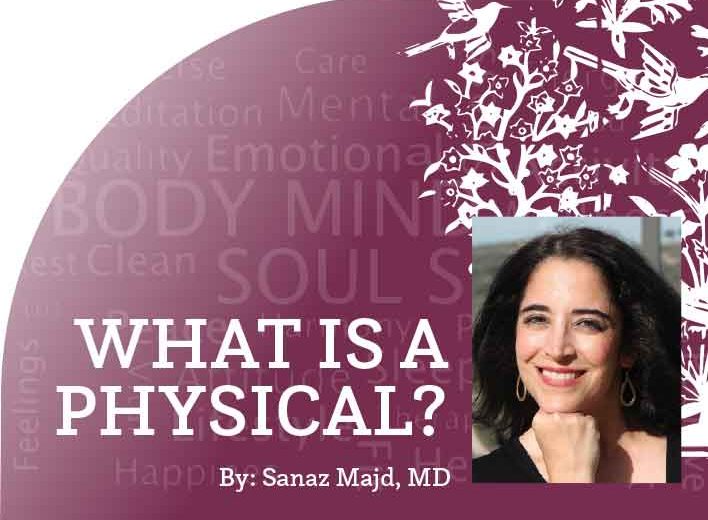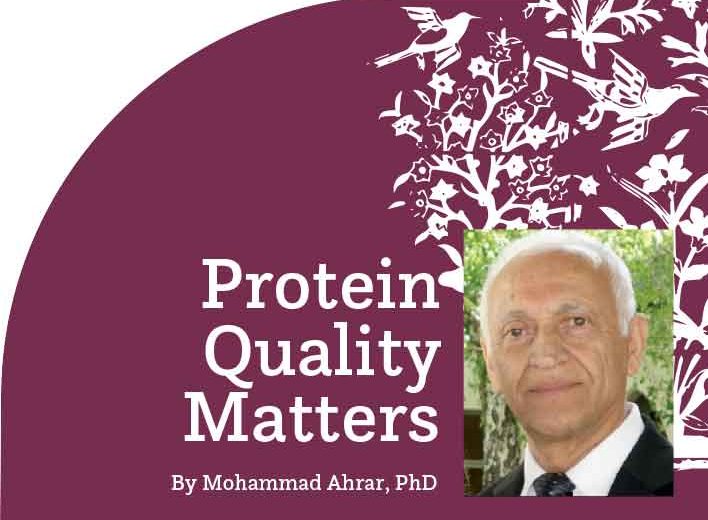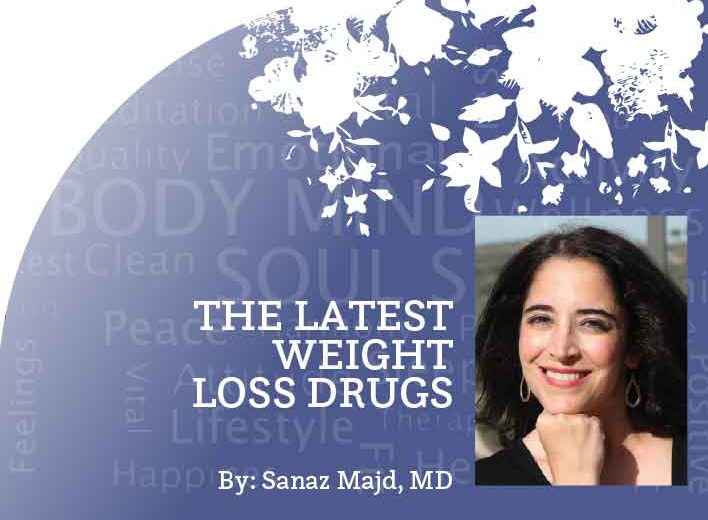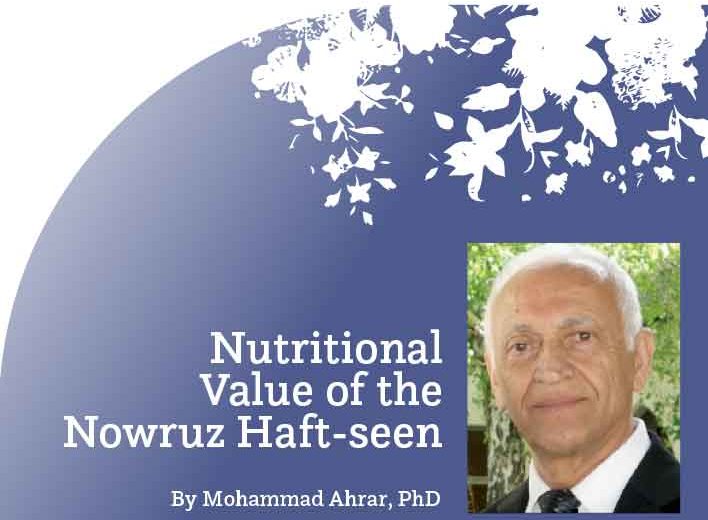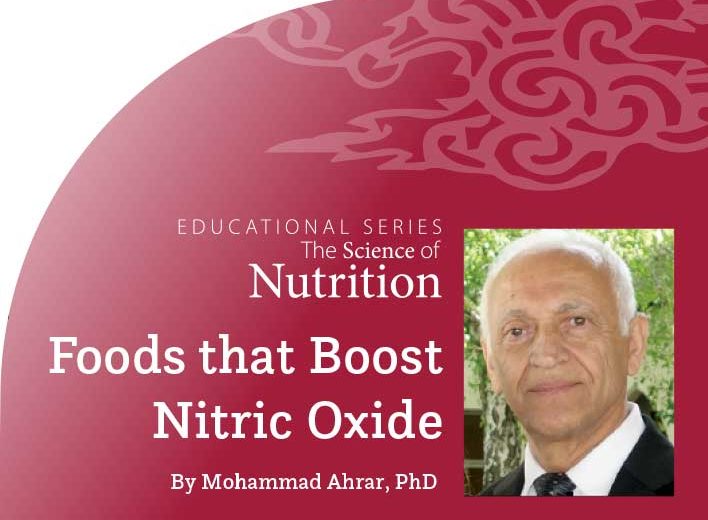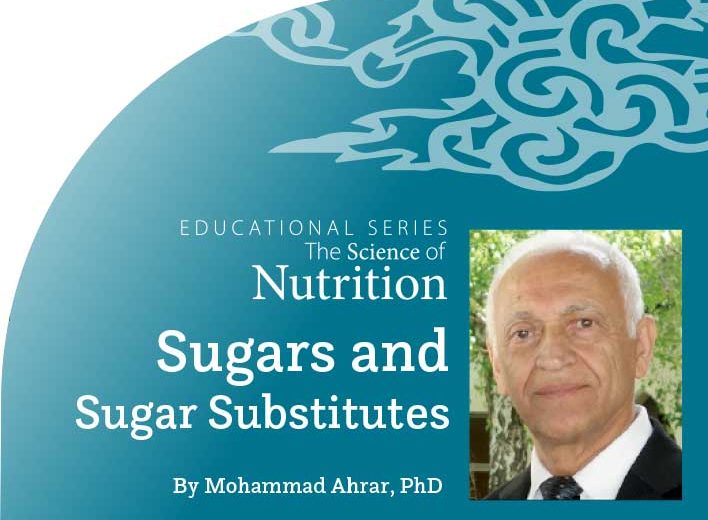HOW TO LOWER YOUR BLOOD PRESSURE
By Sanaz Majd, MD
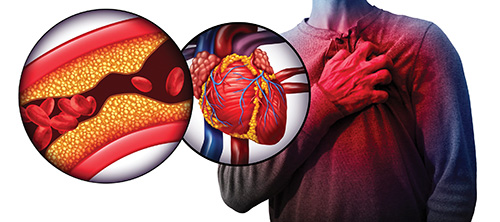 Cardiovascular disease—leading to heart attacks and stroke—is the top cause of death in both women and men. Hypertension is one of the leading risk factors for cardiovascular disease. It is sometimes referred to as a “silent killer,” as elevated blood pressures often do not cause any obvious symptoms, but if left untreated, can lead to sudden heart attack or stroke, which are often life-threatening.
Cardiovascular disease—leading to heart attacks and stroke—is the top cause of death in both women and men. Hypertension is one of the leading risk factors for cardiovascular disease. It is sometimes referred to as a “silent killer,” as elevated blood pressures often do not cause any obvious symptoms, but if left untreated, can lead to sudden heart attack or stroke, which are often life-threatening.
This means that hypertension may be left undiagnosed if blood pressures are not routinely measured. Aside from the doctor’s office, many pharmacies have free blood pressure monitors for public use, and blood pressure monitors are also over-the-counter and relatively inexpensive to purchase for home use.
What is High Blood Pressure
Most people have an issue with systolic blood pressure (the “upper” number), rather than diastolic (the “lower” number). For example, a blood pressure measurement of 120/70 refers to a systolic of 120 and diastolic of 70. The systolic includes the pressure when the heart is contracting, while diastolic refers to the pressure when the heart is relaxing. However, both systolic and diastolic blood pressures are important and can lead to cardiovascular disease.
Hypertension is categorized into stages, depending on the severity. In 2017, the American College of Cardiology/American Heart Association (ACC/AHA) suggested the following staging system:
Stage 1: Systolic 130 to 139, or diastolic 80 to 89 mmHg
Stage 2: Systolic at least 140 mmHg, or diastolic at least 90 mmHg
Note that prior to 2017, stage 1 hypertension was considered systolic of 140 and higher, and/or diastolic of 90 and higher, and 130s over 80s was considered “prehypertension.” But by lowering the threshold for diagnosis, doctors now typically recommend strict lifestyle modification for many people in stage 1 in order to intervene sooner to help prevent progression of the disease. Medication treatment may be recommended as an adjunct to lifestyle changes in stage 2, or in stage 1 if the patient is deemed higher-risk.
Who is at Risk for Developing Hypertension?
• Age: As we age, our arteries stiffen and create more resistance. As a result, our risk increases as we age.
• Weight: People who are overweight or obese are also higher risk.
• Family history: Genetics play a great role as well—people who have 1 or 2 parents with hypertension are twice as likely to develop it themselves.
• Medications: Hormones (like birth control and hormone replacement therapy), certain antidepressants, antipsychotics, steroids, some diabetes medications (such as insulin), stimulants (such as decongestants, phentermine used for weight loss, and medications used to treat ADHD), and non-steroidal anti-inflammatory medications (NSAIDs, such as ibuprofen) can increase blood pressures.
• Medical conditions: Sleep apnea, hyperthyroid, and primary kidney diseases can also contribute to high blood pressures.
Non-Medication Strategies to Lower Blood Pressures
A recent study presented to the AHA in September 2022 showed that by making lifestyle changes, about 27,000 cardiovascular disease (CVD) events (aka heart attack/strokes) and 2,800 deaths could be prevented in the next 10 years for people with Stage 1 hypertension. (1)
With that being said, making the following lifestyle changes is top priority for those with elevated blood pressures of any stage:
Weight loss:
Weight gain raises blood pressures and weight loss often lowers it. (3) Blood pressures diminish by about 0.5 to 2 mmHg for every 1 kg of weight loss. (4) Even mild weight loss may help lower blood pressure, especially in those with stage 1 hypertension. Aim for an initial loss of about 10% of your weight.
Exercise:
The AHA recommends at least 150 minutes (2 and a half hours) a week of moderate-intensity physical activity, such as brisk walking, jogging, swimming—this equates to about 30 minutes a day, 5 days a week. The AHA also recommends muscle strengthening on at least 2 days per week. (2)
Salt restriction:
Most expert medical groups recommend a sodium chloride consumption of less than 2.3 g/day for those with high blood pressure. Foods high in sodium are often processed, such as bread, crackers, snack food, pasta, rice, in addition to soups. Almost anything that comes in a box, can, or jar is salt heavy.
Limiting alcohol:
Alcohol raises blood pressure. Limit alcohol intake to no more than one drink per day for women and two per day for men. Note that one “drink” refers to less than 5 oz. of wine (red wine is best) or 12 oz. of beer. Alcohol is also high in calories and sugar and can also interfere with weight loss in those who are trying to lose.
DASH (Dietary Approaches to Stop Hypertension) diet:
The study mentioned above (1) revealed that adopting a DASH diet may actually have the greatest impact in reducing blood pressures, compared to other non-medication interventions. It estimated a prevention of about 16,000 CVD events in men and 11,000 in women with untreated stage 1 hypertension.
The Dash diet is rich in vegetables, fruits, and whole grains; it incorporates low-fat dairy, fish, poultry, beans, and nuts, and limits foods high in saturated fat. For more details, visit: https://www.nhlbi.nih.gov/education/dash-eating-plan.
The very first thing you can do to assess your health risk is to simply have your blood pressure measured over time. If you use a home monitor, do not forget to bring it to your doctor’s office once a year in order to ascertain its accuracy.
REFERENCES:
1- https://www.ahajournals.org/doi/10.1161/hyp.79.suppl_1.137
2- https://www.heart.org/en/health-topics/high-blood-pressure/changes-you-can-make-to-manage-high-blood-pressure/getting-active-to-control-high-blood-pressure
3- Appel LJ, Brands MW, Daniels SR, Karanja N, Elmer PJ, Sacks FM; American Heart Association. Dietary approaches to prevent and treat hypertension: a scientific statement from the American Heart Association. Hypertension. 2006 Feb;47(2):296-308. doi: 10.1161/01.HYP.0000202568.01167.B6. PMID: 16434724.
4- Stevens VJ, Corrigan SA, Obarzanek E, Bernauer E, Cook NR, Hebert P, Mattfeldt-Beman M, Oberman A, Sugars C, Dalcin AT, et al. Weight loss intervention in phase 1 of the Trials of Hypertension Prevention. The TOHP Collaborative Research Group. Arch Intern Med. 1993 Apr 12;153(7):849-58. PMID: 8466377.
Sanaz Majd, MD is a board-certified Family Medicine physician and host of the Majd MD YouTube channel (@Majd MD), reviewing the latest medical topics and headlines. You can also follow her on Facebook or Instagram: @SMajdMD.


